 Several Vietnam veterans who now call the Santa Clarita, San Fernando and Antelope valleys home were members of Charlie Company, the legendary U.S. Army unit profiled in “The Boys of ’67” (Osprey Publishing), a gripping new book by noted military historian Dr. Andrew Wiest, a professor at the University of Southern Mississippi.
Several Vietnam veterans who now call the Santa Clarita, San Fernando and Antelope valleys home were members of Charlie Company, the legendary U.S. Army unit profiled in “The Boys of ’67” (Osprey Publishing), a gripping new book by noted military historian Dr. Andrew Wiest, a professor at the University of Southern Mississippi.
“’The Boys of ’67’ tells the story of how Charlie Company originated at Fort Riley, Kan., when the 9th Infantry Division was reactivated in mid-1966,” said Bill Reynolds, a company trooper who was wounded in action in June 1967 and earned a Purple Heart.
“It’s the story of various troopers within the company who became good friends as we trained together for six months before traveling to Vietnam aboard a World War II troop ship,” he said, “and how we were bogged down in the Mekong Delta fighting the Viet Cong and enduring a number of battles and firefights, and the losses that we sustained in that year. And the book closes with the impact the war had on a number of those troopers.”
While the war’s impact was negative for some returning Vietnam veterans, many learned to deal with their experiences and had productive post-war lives, Reynolds said.
“We’ve got people who are professors in universities, vice presidents at banks, business owners, middle-management people, guys who’ve been married for 40 years, families, successful lives,” said Reynolds, a longtime Valencia resident.
Back in “The World” after his year-long tour “in-country,” Reynolds worked at General Motors, then went on to become the facilities manager at Lockheed-Martin’s Skunk Works, working on the F-117 Black Hawk stealth fighter, among other “black” (top-secret) projects.

At Charlie Company’s September 2012 reunion and “Boys of ’67” book launch in New Orleans, Chaplain Bernie Windmiller, Jim Rademacher and Bill Reynolds flashed back to the June 19, 1967 battle near Ap Bac Village.
Along with his wife of 43 years, Meg, Reynolds has stayed in touch with his Charlie Company buddies by spearheading their reunions every other year for the past dozen years, most [Several 2nd Platoon troopers take a break while on patrol in the Mekong Delta, May 1967. Top (L-R): Bob Ehlert, Bill Reynolds, Jerry Farber and Donald Jackson. Bottom: Ronnie Bryan, Bill Varsafsky and Ronnie Reynolds. ] recently in New Orleans in September, where the events included a launch party for “The Boys of ’67” with the author and 50 fellow troopers plus families, friends and supporters on hand.
Reynolds said other surviving Charlie Company brothers in arms now living locally and staying in touch include Stan Cockerell (SCV); Carl Cortwright, Larry Walter, Richard Rubio, John Sclimenti and Ronnie Gann (SFV and nearby areas); and Bill Reed, Larry Lilley, Tom Conroy and Larry Hoyle (AV).
In the late ‘90s, Reynolds also launched a website devoted to the 9th Infantry Division and Charlie Company. The site soon became a focal point for the vets, and over the years an invaluable source of division history and information. More recently, it was a significant resource for Wiest in writing “The Boys of ’67.”
Since 1996, he had been teaching a course on Vietnam in collaboration with John Young, a troubled Charlie Company veteran who lived in his area.
Eventually Wiest decided to write a book about Young and Charlie Company. While researching it, he came across the 9th Division tribute site and made contact with Reynolds, who provided a wealth of additional contacts, photos and information.
 Wiest interviewed Reynolds for six hours, conducted extensive interviews with dozens more company veterans and relatives of those who died in combat, and researched the related documents in the National Archives. As a result, “The Boys of ‘67” is a gritty, real-life trip back to the jungles of Vietnam from the perspective of many of the guys who fought there and survived that year. It’s a heart-pumping read, tough to put down.
Wiest interviewed Reynolds for six hours, conducted extensive interviews with dozens more company veterans and relatives of those who died in combat, and researched the related documents in the National Archives. As a result, “The Boys of ‘67” is a gritty, real-life trip back to the jungles of Vietnam from the perspective of many of the guys who fought there and survived that year. It’s a heart-pumping read, tough to put down.
The book has also inspired National Geographic to green-light a documentary about Charlie Company, to air sometime in late 2013 or early 2014, said Reynolds, who is aiding the producers now with contacts and artifacts.
“It’s by the same production company, Lou Reda, that did National Geographic’s ‘Vietnam in HD’ documentary that was seen about a year ago,” he said.
Backdrop of History

In September 1967, 2nd Platoon leader Lt. Jack Benedick was being transferred, and he gathered all the remaining Charlie Company troopers of the 35 who’d arrived in-country in January. Top (L-R): Fred Harrell, James Holstine, Curtis Irvin, Bill Reynolds, Howard Green, Sgt. Dan Kerr and Frank Modde. Bottom: Jimmie Salazar, Lt. Jack Benedick, Bill Varsafsky, Bob French and Mike Cramer. Not pictured: Stan Cockerell.
“The Boys of ’67” also provides the historical context the reader needs to know in order to understand why the 9th Division was sent there in the first place.
Briefly, the American public had generally supported the war in Vietnam, agreeing with President Lyndon B. Johnson and Congress (and JFK and Eisenhower before him) that the war was necessary to stop the spread of Communism from North Vietnam into South Vietnam.
If South Vietnam fell, the so-called “Domino Theory” went, other Southeast Asian countries would fall to Communism as well, all joining the USSR and China — both major supporters of North Vietnam’s effort — in a bid for world domination.
In spring 1966, when Gen. William Westmoreland, chief of U.S. military forces, asked LBJ to OK a huge buildup of troops and resources including the new 9th Division to fight for a decisive victory in Vietnam, the public was still generally supportive of the war.
But anti-war sentiment had begun to build during the division’s six months of training, and as the division shipped out to Vietnam in January 1967. After a year fighting in the Delta, the company’s survivors returned to the States just before the North Vietnamese Tet offensive of early 1968. By then, many Americans were calling for an end to the war.
Instead of a heroes’ welcome, surviving members of Charlie Company — some dealing with physical, psychological and emotional damage from their combat experience — returned to the country they fought to protect to curses and were spat upon by anti-war demonstrators .

Several 2nd Platoon troopers take a break while on patrol in the Mekong Delta, May 1967. Top (L-R): Bob Ehlert, Bill Reynolds, Jerry Farber and Donald Jackson. Bottom: Ronnie Bryan, Bill Varsafsky and Ronnie Reynolds.
‘Boys of ‘67’ Mostly Draftees
As Wiest writes in his book’s preface, “The 9th Infantry Division was the only division to be raised, drafted and trained for service in the Vietnam War.” (Other divisions that fought in Vietnam were already active, vestiges of Korea and World War II; the 9th had been deactivated after WWII.)
“The Boys of ‘67” goes into considerable detail breaking down the company’s diverse demographics upon their arrival at Fort Riley. It was a melting pot of white, black and Hispanic young men from all corners of the country, most with middle- to lower-middle-class backgrounds. But most had at least a high school diploma.
What 98 percent of these troopers had in common, though, as Wiest points out, was that they were drafted. Ironically, John Young, the trooper who inspired him to write the book, was one of Charlie Company’s few enlistees. Other outfits had higher percentages of guys who signed up. But few, if any, bonded as tightly as this one.
“During their training, the men of Charlie Company, almost entirely composed of draftees, became a family without ever really knowing it,” Wiest writes.
“All of us were drafted on or about May 16, 1966,” Reynolds said. “I was attending Pierce College, working at General Motors, had a great job, a brand-new car, pretty girlfriend. A couple of my buddies wanted to join the Marines with them, and I refused. I told them, ‘Uncle Sam knows where I am if he needs me.’ I dropped out of Pierce College one semester and was going to resume the next semester, and then wham-o – I was drafted.”

The 2nd Platoon crosses the Mekong River in search of Viet Cong. Frank Schwan is at center with an M60 machine gun shouldered as Steve Moede crouches.
In-Country
At Fort Riley, Reynolds was assigned to Charlie Company’s 2nd Platoon, 4th Battalion, 47th Regiment, 9th Infantry Division. After six months of grueling training, the soldiers were shipped off to Vietnam, landing in January 1967.
For the next year, the Mobile Riverine Force (nicknamed the “River Raiders”) patrolled an area of the swampy Mekong Delta, a Viet Cong stronghold and source of most of the country’s rice, the population’s staple food.
It was a year spent cruising the river in small power boats and slogging on foot in the withering heat and intense humidity through reeking rice paddies fertilized with human and animal excrement, looking for Viet Cong. Countless “routine patrols” were punctuated by several sudden and terrifying battles with the deeply entrenched and tenacious enemy.
Reynolds was wounded June 19, 1967, in a firefight near Ap Bac Village he remembers vividly, and that Wietz recounts in “The Boys of ‘67” from a composite of Reynolds’ and others’ recollections.
That day, the troopers were transported by boats, called Tangos, from Dong Tam, their base camp, to battlefields off the Mekong River where military intelligence had determined Viet Cong were dug in.
“We were out on a battalion-sized search and destroy mission,” Reynolds said. On the first stop, no sign of the enemy. On the second, all hell broke loose.
“About mid-morning, I was on point for Charlie Company, and we were spread all over this dry rice paddy, when all of a sudden the first shot rang out,” he said. “I hit the ground and realized I was way up front in the open.”
Reynolds remembered stepping over a rice paddy dike about 50 yards behind him. “I jumped up and ran like crazy back to that dike for cover,” he said. “Meanwhile, guys were flying all over the place, running from the open rice paddy to this berm that was parallel to a little creek. We were getting shot at like crazy, bullets flying everywhere, noisier than hell.”
The Viet Cong were on the other side of the berm and the creek, maybe 20 yards away, Reynolds said. “And snipers were shooting at us from the rear. That’s how several of our guys got hit, including Bill Geier, our medic, who was right next to me when he was tending to the wounded. Bill was then mortally wounded. I tried to bandage and save him, but by the time the medic from the 3rd Platoon got there, Bill was dead…pretty much dead, anyway.”
Reynolds and the others shot back at the snipers and over the berm, exchanging fire with the VC dug in across the creek. “I had an over-under, an M79 grenade launcher patched to the bottom of my M16 (rifle), and a bullet blasted through it,” he said, damaging it beyond repair. He picked up another M16 from a fallen soldier nearby.
“We also had several helicopters shot down,” he said, during that firefight. “Meanwhile, the enemy on the other side of the river started catching hell by artillery. Jets were streaming in, more helicopters streaming in, just blasting the heck out of the other side of the river.

The 2nd Platoon returns to base after a successful search and destroy mission in the Mekong Delta.
“Later in the day, when it was calming down there a little bit, our company commander informed us that we were going to assault the other side of the river, and we were ordered back to the boats,” Reynolds said. “So on the other side, everybody came off the boats and just fanned out, looking for Viet Cong.
“I went running down the rice paddy dike and stopped, and I could see a Viet Cong up on this little rise, just standing there, looking across the battlefield,” he said. “I tried to shoot him, but my M16 would only shoot one bullet at a time. I had to pry the spent shell out with my fingernails and put another bullet in. M16s aren’t meant for distance, they’re more for jungle fighting, so I couldn’t hit this guy. Tried three or four times.
“On my fourth time, trying to reload again, a mortar came in and blew up about 20 feet from me, and shrapnel blasted into my right hand,” Reynolds said. “It damn near blew off my trigger finger, of all things, when I was working on my M16. It’s amazing, though, because my hands were right up next to my chest, so (the shrapnel) hit my hand instead of blasting into my body.
“So I went chugging back down to another rice paddy dike and dropped down next to another soldier and was pissed off ’cause my M16 was jamming up and we had too many guys shot and killed and helicopters shot down,” he said. “I was cursing like gangbusters. The soldier next to me turned to look at me, and it was our battalion chaplain.”
Reynolds apologized to Chaplain Bernie Windmiller profusely for using foul language. “He says, ‘Go down to the boat, son,’ so a Navy corpsman bandaged me up, and then they took me and a bunch of other wounded guys up the river, where a helicopter picked us up and took us to the hospital.”
Reynolds was able to recover quickly and was soon back on the front lines with his platoon to complete his tour of duty in late December.
Reynolds said other Charlie Company buddies he’d trained with at Fort Riley back in ’66 were not-so-fortunate boys of ’67, like Bob Ehlert.
On one occasion, Reynolds was again walking point with the company down a jungle trail.
“A sniper started firing at us, so I hit the ground, rolled into a ditch, and then the 2nd Platoon pulled up and it was like World War III,” he said. “Everybody was firing like crazy. And then (Lt.) Jack Benedick, our platoon leader, yelled out, ‘Cease fire!’ When the firing stopped, the guy lying about 10 feet behind me, Bob Ehlert, was hit three times by the sniper. And I could just feel the bullets going ‘pft! pft! pft!’ past my head.”
That didn’t unfortunately make it into “The Boys of ’67,” Reynolds said, but added he understands it’s just about impossible to include every story from every trooper.
“When we went over in January ’67 there were approximately 35 guys in the (2nd) platoon,” he said. “By September, through guys killed, wounded or transferred, we were down to 13 of the originals.”

Logo of the 9th Infantry
Back to ‘The World’
As the men of Charlie Company spent 1967 focused on fighting and surviving in Vietnam, they were under the impression they were doing their country a service. That’s certainly the way they felt at the beginning. But, as mentioned earlier, things changed back in the States while they were in Vietnam.
“When we were loaded onto the troop train at Fort Riley to head west to Oakland, the 9th Infantry Division band was there, playing patriotic, military music,” Reynolds said. “When we got off the train at the (Oakland) docks to get on the troop ship, the band was there again, playing this glorious military music, and oh, gosh, we were all gung-ho. And then when we arrived in Vietnam, as we came ashore at Vung Tau, there was that band again, playing the same sort of stuff.
“Then we had our tour of duty. My last day in Vietnam, before I boarded the airplane to come home, I was burning s**t, literally,” Reynolds said. “And when we came home (to the States) — no band.”
Reynolds was among several Charlie Company vets who passed through the San Francisco airport on their way home. “The hippies were lined up everywhere, and basically shooting verbal insults at us as we were finding our way to our (connecting flights),” he said. “So, it was a sharp contrast from gloriously going into war, to winning the war, then coming home and basically being spit at and yelled and cursed at.”
In the ensuing years, many Vietnam veterans have wrestled not only with what happened in combat, but also the nation’s negative view of the war itself. More recently, though, underscored by the heroes’ welcomes afforded military returning from Kuwait and then Iraq and Afghanistan, and the admission by top-level architects of the war like Robert S. McNamara that it was a political mistake, Vietnam vets have gotten more respect.
In the case of Charlie Company, Wiest’s “The Boys of ‘67” goes a long way to giving this band of brothers their long-overdue due, and ensuring their service and sacrifices will not be forgotten.
“It’s just crazy how we came together in 1966 and here we are,” Reynolds said. “Except for our brave troopers who died in Vietnam and who we’ve lost since, we’re all together still, and we’re all friends.”
For more information, watch the trailer for “The Boys of ’67” and see Amazon’s page. For more on the 9th Infantry Division, visit its veterans’ official website.
Photos and caption info courtesy of Bill Reynolds.
Like this:
Like Loading...
Related
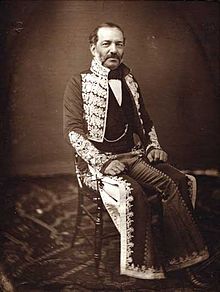



 Tweet This
Tweet This Facebook
Facebook Digg This
Digg This Bookmark
Bookmark Stumble
Stumble RSS
RSS


















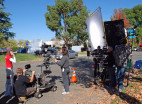

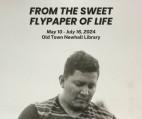

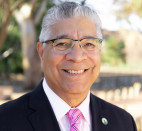





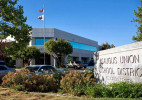
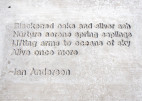




REAL NAMES ONLY: All posters must use their real individual or business name. This applies equally to Twitter account holders who use a nickname.
0 Comments
You can be the first one to leave a comment.